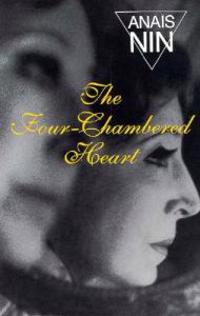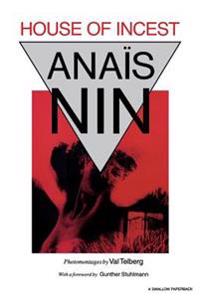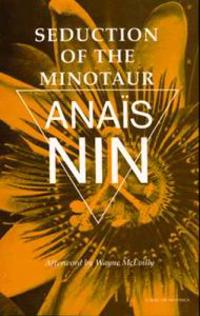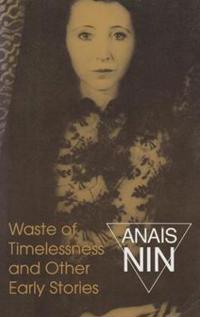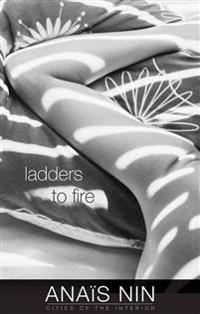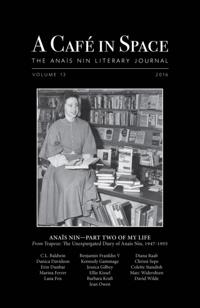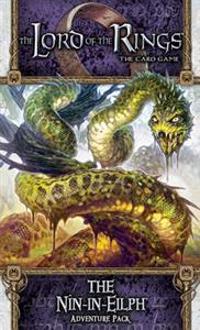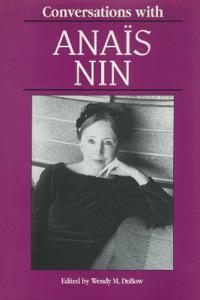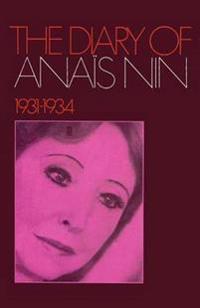Children of the Albatross (Pocket)
avAnais Nin
ISBN: 9780804000390 - UTGIVEN: 1959-06"Children of the Albatross" is divided into two sections: "The Sealed Room" focuses on the dancer Djuna and a set of characters, chiefly male, who surround her; "The Cafe" brings together a cast of characters already familiar to Nin's readers, but it is their meeting place that is the focal point of[...]
The Four-Chambered Heart (Pocket)
avAnais Nin
ISBN: 9780804001212 - UTGIVEN: 1959-06"The Four-Chambered Heart," Anais Nin's 1950 novel, recounts the real-life affair she conducted with cafe guitarist Gonzalo More in 1936. Nin and More rented a house-boat on the Seine, and under the pervading influence of the boat's watchman and More's wife Helba, developed a relationship. More name[...]
House of Incest (Häftad)
avAnais Nin
ISBN: 9780804001489 - UTGIVEN: 199212Originally published in 1936, House of Incest is Anais Nin's first work of fiction. The novel is a surrealistic look within the narrator's subconscious mind as she attempts to escape from a dream in which she is trapped, or in Nin's words, as she attempts to escape from "the woman's season in hell."[...]
Waste of Timelessness and Other Early Stories (Häftad)
avAnais Nin
ISBN: 9780804009812 - UTGIVEN: 199312Written when Anais Nin was in her twenties and living in Louveciennes, France, these stories contain many elements that will delight her readers: details remembered from childhood, of life in Paris, the cafes, theatres; characters including dancers, artists, writers, women who devote themselves to t[...]
Mirages (Inbunden)
avAnais Nin
ISBN: 9780804011464 - UTGIVEN: 2013-10"Mirages" opens at the dawn of World War II, when Anais Nin fled Paris, where she lived for fifteen years with her husband, banker Hugh Guiler, and ends in 1947 when she meets the man who would be "the One," the lover who would satisfy her insatiable hunger for connection. In the middle looms a peri[...]
Under a Glass Bell (Häftad)
avAnais Nin, Elizabeth Podnieks
ISBN: 9780804011471 - UTGIVEN: 2014-01Although "Under a Glass Bell" is now considered one of Anais Nin's finest collections of stories, it was initially deemed unpublishable. Refusing to give up on her vision, in 1944 Nin founded her own press and brought out the first edition, illustrated with striking black-and-white engravings by her[...]
A Spy in the House of Love (Häftad)
avAnais Nin, Anita Jarczok
ISBN: 9780804011488 - UTGIVEN: 2013-12Although Anais Nin found in her diaries a profound mode of self-creation and confession, she could not reveal this intimate record of her own experiences during her lifetime. Instead, she turned to fiction, where her stories and novels became artistic "distillations" of her secret diaries. "A Spy in[...]
Ladders to Fire (Pocket)
avAnaïs Nin, Benjamin Franklin, Gunther (FRW) Stuhlmann
ISBN: 9780804011556 - UTGIVEN: 2014-10Anais Nin's "Ladders to Fire" interweaves the stories of several women, each emotionally inhibited in her own way: through self-doubt, fear, guilt, moral drift, and distrust. The novel follows their inner struggles to overcome these barriers to happiness and wholeness. The author's own experiences, [...]
Writing an Icon: Celebrity Culture and the Invention of Anaïs Nin (häftad)
ISBN: 9780804011761 - UTGIVEN: 2017-03Ana s Nin, the diarist, novelist, and provocateur, occupied a singular space in twentieth-century culture, not only as a literary figure and voice of female sexual liberation but as a celebrity and symbol of shifting social mores in postwar America. Before Madonna and her many imitators, there was N[...]
The Quotable Anais Nin: 365 Quotations with Citations (häftad)
ISBN: 9780988917064 - UTGIVEN: 2015-11A Cafe in Space: The Anais Nin Literary Journal, Volume 13 (häftad)
ISBN: 9780988917071 - UTGIVEN: 2016-02A Cafe in Space: The Anais Nin Literary Journal, Volume 14 (häftad)
ISBN: 9780998724614 - UTGIVEN: 2017-02Anais Nin's Lost World: Paris in Words and Pictures, 1924-1939 (häftad)
ISBN: 9780998724645 - UTGIVEN: 2017-11Few writers are as legendary as Anais Nin. Her diaries, both expurgated and unexpurgated, and a host of biographies have documented her life in an almost unprecedented way, yet she remains shrouded in mystery. Who is the woman behind the myth? Anais Nin's Lost World depicts Nin's life from the persp[...]
A Cafe in Space: The Anais Nin Literary Journal, Anthology 2003-2018 (häftad)
ISBN: 9780998724683 - UTGIVEN: 2019-02A Caf in Space has been the only literary journal devoted to novelist/diarist Anais Nin since 2003. This anthology represents the contents of the fifteen annual issues, including previously unpublished diary entries and correspondence by Nin; previously unpublished correspondence by Henry Miller, R[...]
The Lord of the Rings Lcg: The Nin-In-Eilph Adventure Pack (Övrigt)
ISBN: 9781616618605 - UTGIVEN: 2014-07Conversations with Anais Nin (Häftad)
ISBN: 9781617030598 - UTGIVEN: 2011-01Anais Nin says: Eroticism is one of the basic means of self-knowledge, as basic as poetry. I would like to see women more concerned with women's contributions than with this great battle of attacking men...We should be very busy creating the pattern of the new woman, honoring her gifts, finding out [...]
Apprenticed to Venus: My Secret Life with Anais Nin
ISBN: 9781628727784 - UTGIVEN: 2017-07A Revealing Look at the Mentorship--and Manipulation--of Anais Nin In 1962, eighteen-year-old Tristine Rainer was sent on an errand to Anais Nin's West Village apartment. The chance meeting would change the course of her life and begin her years as Anais's accomplice, keeping her mentor's confidence[...]


